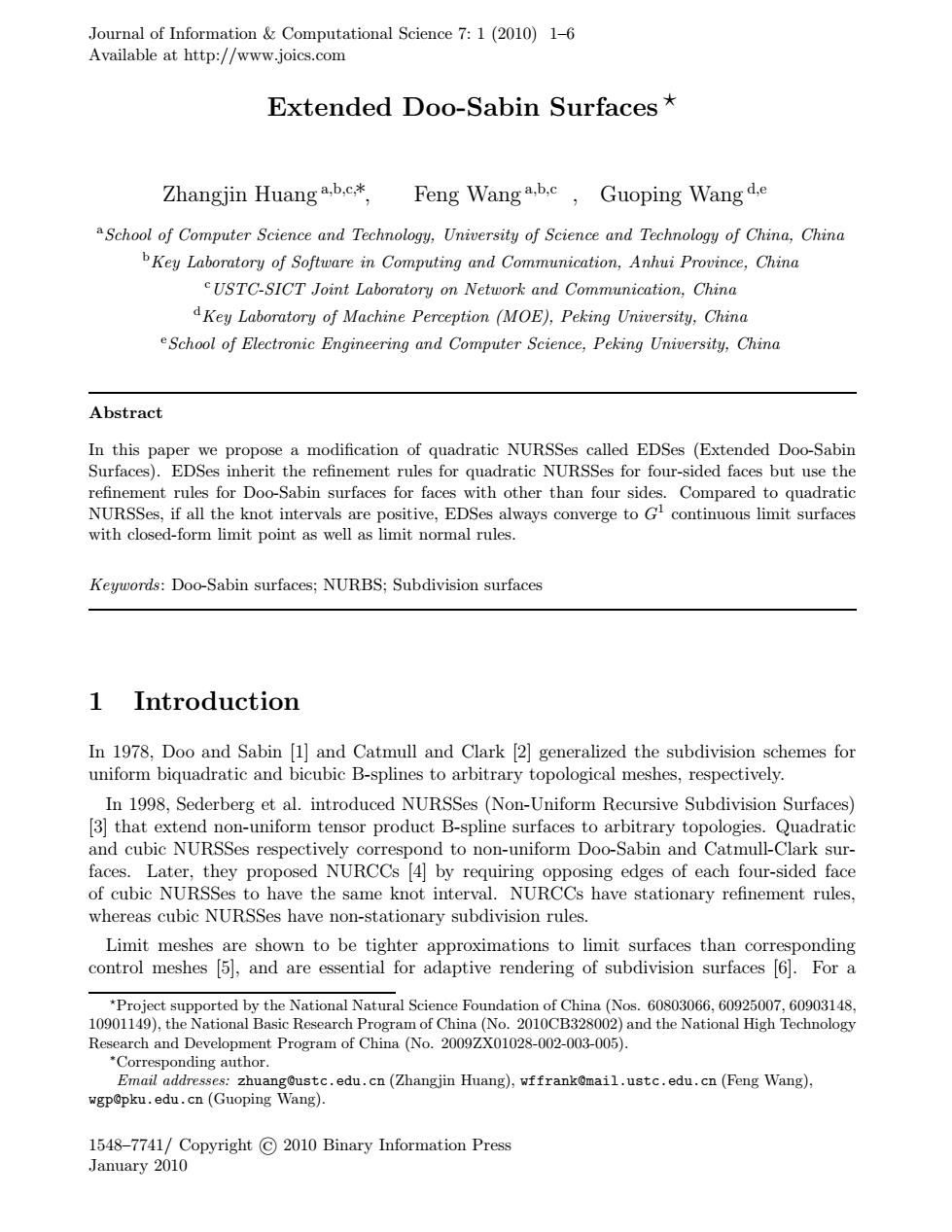正在加载图片...

Aole业nirpkCtatiolsaiaoe12w1o0y1-6 Extended Doo-Sabin Surfaces Zhangin Huangab.c Feng Wangabc,Guoping Wang de Abstract dification of but use th Keyuonis:Doo-Sahin surfnce;NURBS:Subdivision surfaces 1 Introduction ebie non-ationryivisole nd D (g)()Journal of Information & Computational Science 7: 1 (2010) 1–6 Available at http://www.joics.com Extended Doo-Sabin Surfaces ? Zhangjin Huang a,b,c,∗, Feng Wang a,b,c , Guoping Wang d,e aSchool of Computer Science and Technology, University of Science and Technology of China, China bKey Laboratory of Software in Computing and Communication, Anhui Province, China cUSTC-SICT Joint Laboratory on Network and Communication, China dKey Laboratory of Machine Perception (MOE), Peking University, China eSchool of Electronic Engineering and Computer Science, Peking University, China Abstract In this paper we propose a modification of quadratic NURSSes called EDSes (Extended Doo-Sabin Surfaces). EDSes inherit the refinement rules for quadratic NURSSes for four-sided faces but use the refinement rules for Doo-Sabin surfaces for faces with other than four sides. Compared to quadratic NURSSes, if all the knot intervals are positive, EDSes always converge to G1 continuous limit surfaces with closed-form limit point as well as limit normal rules. Keywords: Doo-Sabin surfaces; NURBS; Subdivision surfaces 1 Introduction In 1978, Doo and Sabin [1] and Catmull and Clark [2] generalized the subdivision schemes for uniform biquadratic and bicubic B-splines to arbitrary topological meshes, respectively. In 1998, Sederberg et al. introduced NURSSes (Non-Uniform Recursive Subdivision Surfaces) [3] that extend non-uniform tensor product B-spline surfaces to arbitrary topologies. Quadratic and cubic NURSSes respectively correspond to non-uniform Doo-Sabin and Catmull-Clark surfaces. Later, they proposed NURCCs [4] by requiring opposing edges of each four-sided face of cubic NURSSes to have the same knot interval. NURCCs have stationary refinement rules, whereas cubic NURSSes have non-stationary subdivision rules. Limit meshes are shown to be tighter approximations to limit surfaces than corresponding control meshes [5], and are essential for adaptive rendering of subdivision surfaces [6]. For a ?Project supported by the National Natural Science Foundation of China (Nos. 60803066, 60925007, 60903148, 10901149), the National Basic Research Program of China (No. 2010CB328002) and the National High Technology Research and Development Program of China (No. 2009ZX01028-002-003-005). ∗Corresponding author. Email addresses: zhuang@ustc.edu.cn (Zhangjin Huang), wffrank@mail.ustc.edu.cn (Feng Wang), wgp@pku.edu.cn (Guoping Wang). 1548–7741/ Copyright © 2010 Binary Information Press January 2010